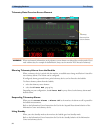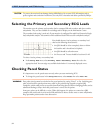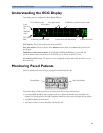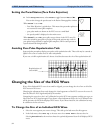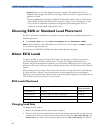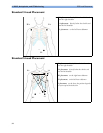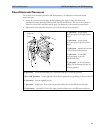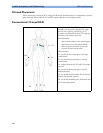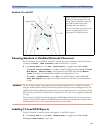
6 ECG, Arrhythmia, and ST Monitoring Changing the Size of the ECG Wave
94
Setting the Paced Status (Pace Pulse Rejection)
Avoiding Pace Pulse Repolarization Tails
Some unipolar pacemakers display pace pulses with repolarization tails. These tails may be counted as
QRSs in the event of cardiac arrest or other arrhythmias.
If you note a visible repolarization tail, choose a lead that decreases the size of the repolarization tail.
Changing the Size of the ECG Wave
If any of the displayed ECG waves is too small or clipped, you can change the size of one or all of the
ECG waves on the screen.
Changing the adjustment factor only changes the visual appearance of the ECG wave on the screen. It
does not affect the ECG signal analyzed by the monitor.
Comparing the wave size to the 1 mV calibration bar on the ECG wave segment can help you to get an
idea of the true ECG signal strength. If you choose a fixed adjustment factor, the 1 mV calibration bar
will be the same size for all the displayed ECG waves. If you choose AutoSize, the calibration bar may
be a different size for each wave.
To Change the Size of an Individual ECG Wave
1 Select the wave segment you want to change. This calls up the lead menu for this segment.
2 In the lead menu, select Size Up to increase wave size or Size Down to decrease the size.
Selecting AutoSize lets the monitor choose the optimal adjustment factor for all displayed ECG
waves.
♦ In the Setup ECG menu, select Paced to toggle between Yes and No.
You can also change the paced status in the Patient Demographics window.
When
Paced is set to Yes:
– Pace Pulse Rejection is switched on. This means that pacemaker pulses are
not counted as extra QRS complexes.
– pace pulse marks are shown on the ECG wave as a small dash
– the paced symbol is displayed on the main screen.
When Paced is set to No, pacer spikes are not shown in the ECG wave. Be
aware that switching pace pulse rejection off for paced patients may result in
pace pulses being counted as regular QRS complexes, which could prevent an
asystole alarm from being detected.
Paced
Non-Paced
Repolarization tail
(note width)







